Biju Janata Dal Party Headquarters’ connection with the streetscape is a testament to the inclusive development and regional pride of design in Odisha.

July 3rd, 2024
The dominant political force of Odisha, known for its commitment to inclusive development and regional pride, is woven into the design of the Biju Janata Dal Party Headquarters. The building stands as a celebration of the Indian state’s heritage and instils civic pride.
Originally designed as a five-storey structure, Studio Lotus proposed a three-storey design to maintain a stronger connection with the streetscape. This reduction minimised unnecessary space and construction costs. The campus’ ground plane is elevated to form a plinth for public functions and community events. This deliberate elevation, with its direct visual connection with the street, fosters an open and transparent connection with pedestrians, bringing them into the fold and blurring the threshold of public and private space,” says the team at Studio Lotus. The public amenities on the ground level include a cafeteria, a library and an audio-visual gallery.

The team at Studio Lotus explains further: “A double-height auditorium punctuates the upper floors in plan and elevation, protruding from the monolithic exterior along the eastern face to mark a subtle shift in the otherwise planar built form.” The upper levels feature open-plan layouts to promote a collaborative environment. The first floor then comprises a combination of workspaces, meeting rooms and cabins for the upper management, while the second floor is primarily reserved for party leadership, with private cabins, resting areas and video conference rooms.
The material palette boasts terracotta tiles, exposed concrete and local stones like Odisha grey granite and khondalite, reflecting the regional context. The interiors feature Dhokra-inspired metalwork and sculpted khondalite benches, integrating local crafts into the building’s design and promoting regional employment.
Related: Community and connection in Rajasthan

Moving to the facade and exterior amenities, which were designed in collaboration with Siddhartha Das Studio, feature sculpturally designed breakaway zones built from laterite and terracotta. “Hand-chiselled by local stoneworkers, depict intricate motifs derived from traditional handloom weaving patterns such as ikat and Sambalpuri,” says the team at Studio Lotus.
Sustainability was a predominant theme for Studio Lotus during the design phase, with passive and active climate-responsive measures improving the building’s performance. A generous window-to-wall ratio reduces reliance on artificial lighting, while overhangs and terraces offer shade and limit heat gain. Internal courtyards allow natural light infiltration and cross-ventilation. The plethora of environmentally conscious doesn’t stop there with rainwater harvesting, groundwater recharge and solar panel provisions further supporting sustainability.
Studio Lotus
studiolotus.in
Photography
Suryan Dang









INDESIGN is on instagram
Follow @indesignlive
A searchable and comprehensive guide for specifying leading products and their suppliers
Keep up to date with the latest and greatest from our industry BFF's!
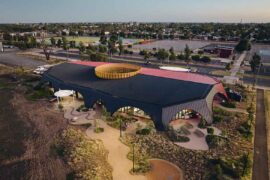
At the Munarra Centre for Regional Excellence on Yorta Yorta Country in Victoria, ARM Architecture and Milliken use PrintWorks™ technology to translate First Nations narratives into a layered, community-led floorscape.
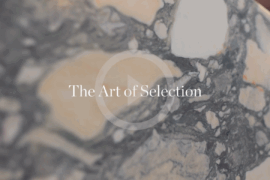
CDK Stone’s Natasha Stengos takes us through its Alexandria Selection Centre, where stone choice becomes a sensory experience – from curated spaces, crafted details and a colour-organised selection floor.
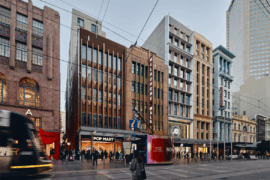
Merging two hotel identities in one landmark development, Hotel Indigo and Holiday Inn Little Collins capture the spirit of Melbourne through Buchan’s narrative-driven design – elevated by GROHE’s signature craftsmanship.
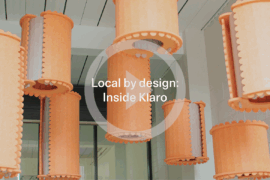
In an industry where design intent is often diluted by value management and procurement pressures, Klaro Industrial Design positions manufacturing as a creative ally – allowing commercial interior designers to deliver unique pieces aligned to the project’s original vision.
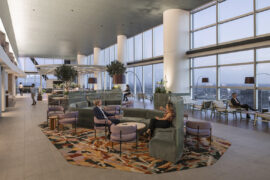
Designed by Woods Bagot, the new fit-out of a major resources company transforms 40,000-square-metres across 19 levels into interconnected villages that celebrate Western Australia’s diverse terrain.

In an industry where design intent is often diluted by value management and procurement pressures, Klaro Industrial Design positions manufacturing as a creative ally – allowing commercial interior designers to deliver unique pieces aligned to the project’s original vision.
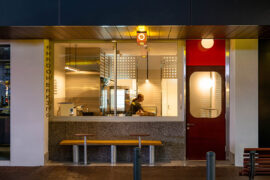
Working within a narrow, linear tenancy, Sans Arc has reconfigured the traditional circulation pathway, giving customers a front row seat to the theatre of Shadow Baking.

At the Munarra Centre for Regional Excellence on Yorta Yorta Country in Victoria, ARM Architecture and Milliken use PrintWorks™ technology to translate First Nations narratives into a layered, community-led floorscape.
The internet never sleeps! Here's the stuff you might have missed
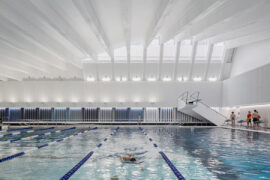
Hiwa, the University of Auckland’s six-storey recreation centre by Warren and Mahoney with MJMA Toronto and Haumi, has taken out Sport Architecture at the 2025 World Architecture Festival. A vertical village for wellbeing and connection, the project continues its run of global accolades as a new benchmark for campus life and student experience.
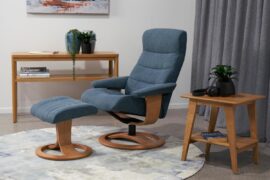
Your main seating can be a stylish centrepiece, not just a functional chair.